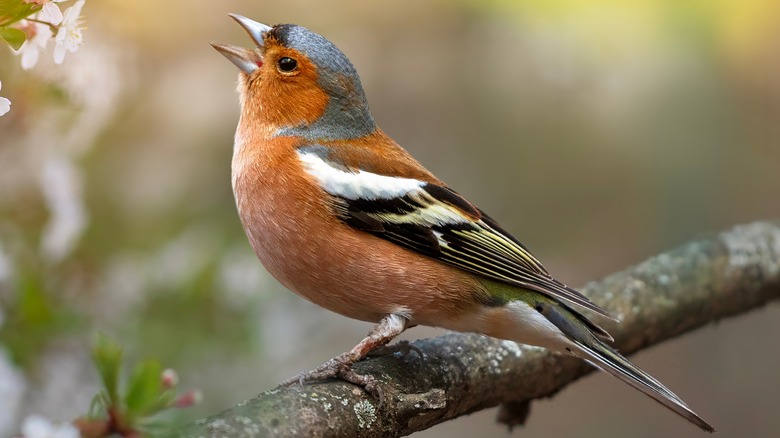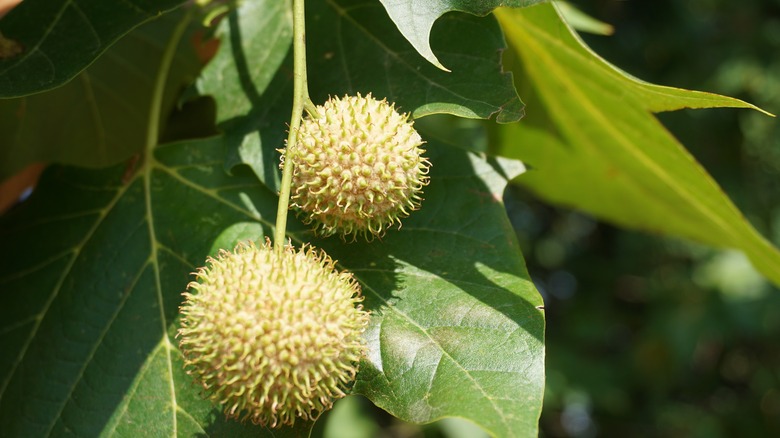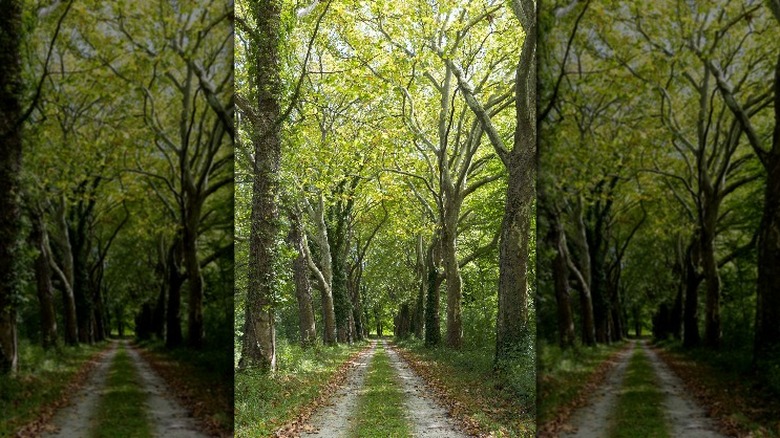The Fruit-Bearing Tree Songbirds Will Love Visiting In Your Yard
To transform your garden into a bird-loving haven, you'll need to include all the essentials that help birds thrive. While adding a birdhouse and a few feeders may attract feathered friends, plants like trees and shrubs can offer natural food sources, good cover, and sturdy stems for perching, which the London plane tree (Platanus × acerifolia) is happy to provide. Growing up to 100 feet tall, this massive tree is rumored to be the first garden hybrid and is a cross between the American sycamore and Oriental plane tree. Hardy in zones 5 to 9, this shady species is a considerable choice if you want to attract songbirds to your garden.
Majestic but tough, the London plane tree is valued for its unique appearance and ability to handle drought and air pollution. It features large, maple-like leaves that are bright green in summer and fade to golden yellow in the fall. Although stunning, its foliage pales in comparison to its attractive bark. As the gray outer bark peels away, it reveals a camouflage-like mosaic of colors such as green and cream underneath. Although the flowers aren't all that showy, its clusters of spiky, green ball-shaped fruit add plenty of character while providing a food source for birds. Plus, there's nothing quite like relaxing under a shade tree in your backyard to escape the summer heat, so its broad canopy makes this tree an ideal choice for us land-dwellers, too.
Songbirds love the diverse nutrition and protective cover the London plane tree offers
The London plane tree is a magnet for songbirds, offering a feast of nutrient-rich fruit that ripens in late summer and fall. Species like juncos, purple finches, and goldfinches enjoy munching on these seed-packed clusters. This tree also produces a large amount of sap, which is highly sought after by the aptly named sapsucker. Sapsuckers peck holes into the tree until the sweet, sticky liquid flows out, and they use their tongues to lick it up. Insects gravitate to the sap, giving species like other warblers and nuthatches an opportunity to stop by for a snack. Additionally, this tree may have a few caterpillars crawling around, offering a generous source of protein for insectivorous songbirds.
Nesting birds look for a spot close to food but protected from predators, and the London plane tree provides just that. Its dense canopy and broad, spreading branches offer ample nesting sites, which help to attract warblers to your yard. Flycatchers, chimney swifts, and other cavity-nesting species may also utilize the hollow tree trunks to build their homes, though this is more common in older trees. The extensive branching in the London plane tree also makes it the perfect location for birds of all kinds to perch and survey their surroundings, helping them stay safe from predators.
How to plant a London plane tree to attract birds to your garden
If you want to add this gorgeous tree with white bark to your backyard, consider its impressive size first. Not only is it tall, but it can also spread to 80 feet wide, so avoid planting it too close to buildings or structures that may be in the way. Choose a location where the London plane tree can receive partial sun exposure with a minimum of 4 hours of bright, direct sunlight. Once you've found the perfect spot for planting, you won't have to worry too much about the soil type. This tree is tolerant of most soils, including clay. Once established, it's relatively drought-tolerant, but supplemental watering can be beneficial, especially during dry periods.
In addition to providing food and shelter through a London plane tree, consider adding nest-building plants to your garden to make it even more attractive to birds. Ornamental grasses with fine blades, like fountain grass (Pennisetum setaceum), provide the perfect material for several types of nests birds may build. Songbirds and other species also like using fluffy materials to create a cozy, insulated cup for their young. For example, milkweed (Asclepias syriaca) is a top choice due to the fuzzy attachments on its seeds. Beyond nesting materials, offering a water source will further attract birds to your backyard. Although the London plane tree will collect water droplets for birds, adding a birdbath will provide a reliable spot to drink and bathe during periods of low rainfall.


